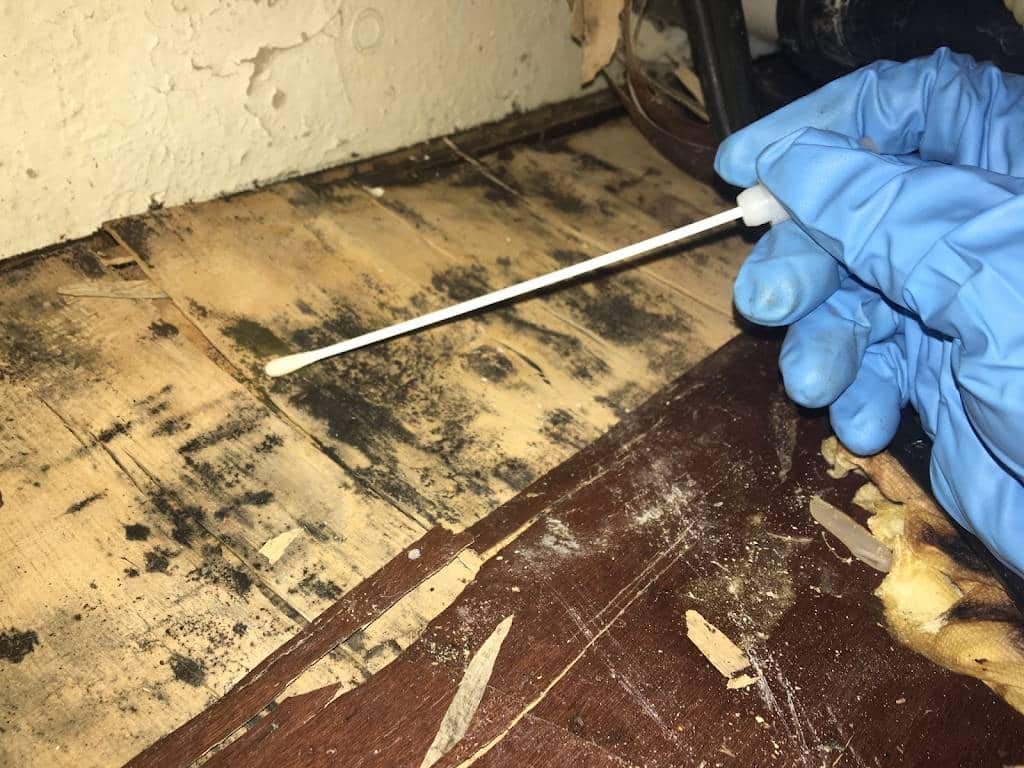Effective Message Mold Remediation Solutions for Your Home
Mold and mildew development in homes can be a relentless problem, typically needing a methodical strategy for efficient post-remediation remedies. From recognizing the factors that contribute to mold and mildew advancement to implementing correct cleansing techniques and moisture control steps, the procedure can be intricate yet crucial for keeping a healthy living atmosphere. testing air quality after mold remediation.
Comprehending Mold And Mildew Development Elements
The primary aspect contributing to mold development is dampness. Mold and mildew spores need wetness to flourish and germinate, making moist or moist atmospheres extremely at risk to mold and mildew infestations.

Moreover, airflow and light direct exposure can impact mold development. Locations that lack appropriate air flow and natural light are much more prone to mold development. By dealing with these elements comprehensively, individuals can efficiently reduce mold growth and safeguard their living atmospheres.
Proper Mold Cleansing Strategies
Utilizing effective cleaning methods is essential in avoiding the reoccurrence and attending to of mold contamination in interior settings. When dealing with mold and mildew, it is vital to prioritize security by putting on safety gear such as goggles, handwear covers, and masks. The very first step in proper mold cleaning is to contain the afflicted area to avoid the spread of spores to uncontaminated areas. This can be achieved by sealing off the space and making use of air scrubbers or unfavorable air makers to keep air quality.

Applying Moisture Control Measures
To effectively avoid mold growth and contamination in interior atmospheres, applying wetness control procedures is paramount. Wetness is the key factor that fuels mold development, making it crucial to take care of moisture levels within the home. One reliable measure is to utilize dehumidifiers to maintain interior humidity levels below 60%. Furthermore, making certain proper ventilation in locations prone to moisture accumulation, such as kitchen areas and bathrooms, can help in reducing the threat of mold development. Frequently inspecting and fixing any kind of leaks in plumbing, roofs, or home windows is additionally essential in stopping excess wetness accumulation. Making use of exhaust fans while cooking or bathing, and permitting air flow by maintaining furniture somewhat away from wall surfaces can help in dampness control. Additionally, making use of moisture-resistant products in high-humidity areas, such as mold-resistant drywall and paints, can be advantageous. By faithfully executing these dampness control steps, homeowners can successfully minimize the likelihood of mold recontamination and maintain a healthy interior setting.
Using All-natural Removal Solutions
After successfully applying blog wetness control procedures to avoid mold and mildew growth in interior settings, property owners can now discover the performance of all-natural removal remedies in preserving a healthy home. All-natural remediation options make use of eco-friendly approaches to battle mold and mildew and mold, making them a popular choice for those seeking non-toxic options. One such service is using vinegar, a natural antimicrobial agent, to disinfect and clean surfaces infected by mold. Just dilute vinegar with water and spray it onto the affected locations, allowing it to sit for a couple of hours prior to wiping tidy. In addition, tea tree oil, recognized for its antifungal buildings, can be blended with water and sprayed onto mold-infested surfaces to prevent further growth. An additional natural option is hydrogen peroxide, which can efficiently eliminate mold and mildew on various surface areas without leaving unsafe residues behind. By integrating these all-natural remediation services right into their cleansing regimens, property owners can efficiently combat mold and mildew development while advertising a healthier indoor atmosphere for themselves and their households.

Preserving a Mold-Free Atmosphere
In order to protect against mold recurrence and make certain a constantly mold-free atmosphere, it is important for property owners to carry out positive upkeep techniques. Routinely examining locations susceptible to mold and mildew growth, such as bathrooms, basements, attic rooms, and kitchen areas, is essential. Dealing with any leakages, water damages, or excess dampness promptly can dramatically decrease the danger of mold and mildew advancement. Post Mold Remediation Report. Proper air flow in locations with high humidity degrees is additionally essential to avoiding mold and mildew growth. Making use of dehumidifiers or exhaust fans can assist preserve optimum dampness degrees and dissuade mold and mildew spores from flourishing.
Additionally, preserving tidiness in the home is essential for mold and mildew prevention. Regularly cleansing and dusting surfaces, carpets, and upholstery can help remove mold and mildew spores before they have a chance to multiply and settle. Using mold-resistant items for building materials and furnishings can better aid in creating a mold-free setting. Keeping indoor plants in check and making certain proper drainage in exterior landscape design can decrease moisture accumulation, reducing the likelihood of mold and mildew invasions. By see this adhering to these positive upkeep practices, property owners can successfully promote a mold-free living space.
Final Thought
To conclude, it is necessary to address mold growth factors, utilize correct cleansing strategies, execute moisture control actions, make use of natural removal services, and keep a mold-free setting in order to successfully manage message mold and mildew removal in your house - what to do after mold remediation. By adhering to these methods, you can prevent mold and mildew from repeating and make certain a healthy and balanced living environment for you and your household
The primary variable contributing to mold development is wetness. Mold spores call for moisture to sprout and thrive, making damp or damp atmospheres very susceptible to mold and mildew invasions.To efficiently avoid mold and mildew growth and contamination in interior environments, implementing wetness control measures is remove mold toxins critical. Furthermore, making sure correct ventilation in locations prone to moisture buildup, such as cooking areas and washrooms, can aid reduce the risk of mold development.After efficiently applying moisture control procedures to avoid mold development in indoor environments, property owners can currently explore the effectiveness of natural removal options in keeping a healthy and balanced living area.